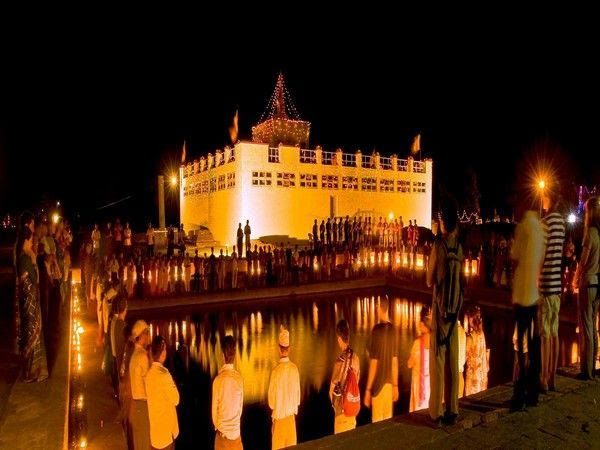
Lumbini, NepalBy — Shyamal Sinha
Lumbini, the birthplace of Gautama Buddha is missing tourists this year due to the global pandemic situation. Otherwise, thousands of Indians visit this UNESCO World Heritage Site annually.
The archaeological remains, although fragmentary, provide important evidence about the nature and intensity of the practices of Buddhist pilgrimage over nearly two thousand years (and now revived in the 20th century).” “As the birthplace of the Lord Buddha, testified by the inscription on the Ashoka pillar, the sacred area in Lumbini is one of the most holy and significant places for one of the world’s great religions.”
“The number of Indian tourists (in Lumbini) stood at 93,852 last year while domestic tourists were 680,206. Around 86,531 tourists from other countries also had visited the site. Now it’s entirely silent,” said Gyanin Rai, Member Secretary at Lumbini Development Trust.
“Tourists used to throng the area for family tours, annual closing celebration and many other occasions mainly between January to July every year. Businesses use to boom mostly at that time but now it is all silent. We all miss them. Our revenue also has slumped due to this COVID-19 crisis,” Rai added.
The economic crisis induced by COVID‐19 could be long, deep, and pervasive when viewed through amigration lens
Rupandehi, which lies in the southern plains of Nepal is connected with India. Thousands of tourists enter via various entry points established in between the two nations without requiring any sort of documents.
The tourism places of Nepali districts adjoining India have been relying on tourists coming from the southern neighbour. Last year, Nepal had welcomed 209,611 Indian tourists out of a total arrival of 1.17 million tourists.
In view of the growing number of pilgrims visiting the site, both the Lumbini Development Trust and JBF wished to adequately protect and present the ruins of the old Maya Devi Temple site as a matter of urgency. In 1998, the 2nd Seminar on Lumbini Development, attended by various international Buddhist institutions, discussed the revision of the Kenzo Tange Masterplan and stated the need for the construction of a new temple according to “archaeological norms and traditional ritual practice”. This wish by the international Buddhist community to have a new Maya Devi Temple was reiterated on various occasions.
It would not be incorrect to state that COVID-19 triggered massive reverse migration is likely to have far reaching implications for the migrants as well as the country, unless adequate and timely measures are taken to address this issue. First and foremost, the government needs to ensure that the distressed migrants get back to their homes safely. At the same time, quarantine strategies need to be devised to prevent this migration led spread of infection to the remotest places of India. The migrants should be assured of safety and financial security and motivated to get back to work at the earliest possible time. SARS-CoV-2 is here to stay, and hence, it is recommended to follow due safety measures to combat its threat, at least till the time vaccine is developed. Let’s learn to face novel Corona virus effectively with what we have instead of running from it.












